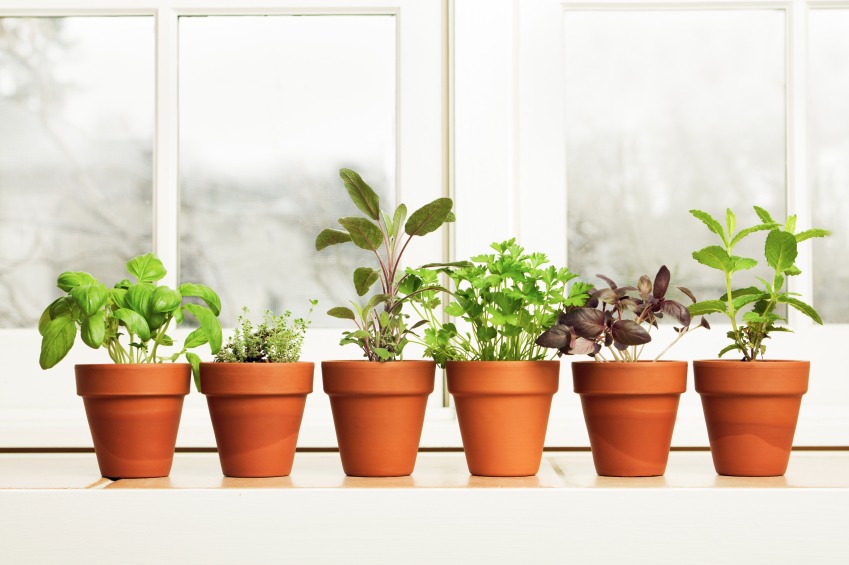Cooking with Herbs Add Flavor
These beautiful days have me aching to plant my herb garden. I already have it planned out. It will be an Italian herb garden, with sweet basil, oregano, Italian parsley and maybe I’ll throw in some rosemary if space permits.
Cooking with fresh herbs really enhance the flavors of food without adding to the
fat, sodium or calorie content. There are hundreds of varieties of fresh herbs available
for the common cook, many which are easily grown at home.
Herbs and spices have a long culinary history, dating back more than 2,000 years.
They were known to be traded throughout the Mediterranean and Middle East. Spices
were the motive for Christopher Columbus’ forays across the ocean.
Despite what some think, “spice” and “herb” cannot be used interchangeably.
Spices come from the bark, buds, fruit, roots seeds or stems of plants and trees. They are usually dried; garlic and gingerroot are two exceptions.
Herbs are the fragrant leaves of plants. It is possible for one plant to provide both herbs and spices. Such is the case of the coriander plant. The seeds of the plant are combined with others to make curry powder, while the leaves of the same plant are called cilantro, a favorite seasoning in Mexican dishes.
How to store herbs
Store your dried herbs and spices in tightly covered containers in a cool, dark place (not the refrigerator). Avoid placing your spice rack near a window or above the stove because heat, bright light and air destroy the flavor, while moisture can cause herbs and spices to mold.
As a general rule of thumb, the more airtight the container of dried herbs, the longer they will last. Store them in small glass bottles or jars with screw type lids. Each time you use the herb, make sure the lid is tightly closed.
To assure that you are using your dried herbs in a timely manner, date the container.
Then use it as needed, but preferably within the year. Herbs do not last indefinitely and will begin to lose their freshness.
To check the freshness, rub seasonings between your fingers and smell the aroma. If there’s not much smell, you may need to get a new supply.
Fresh vs. dried herbs
Cooking with fresh herbs is as easy as cooking with dried, with a few exceptions. As a general rule, use three times as much fresh herb as you would a dried herb. If given the chance, use fresh over dried each time. Make spaghetti sauce with fresh basil and oregano instead of dried and experience the difference.
If you are purchasing herbs from the produce section of the supermarket, purchase them close to the time you plan to use them. If you are growing them in your own garden, the ideal time to pick them is in the morning after the dew has dried, but before the sun gets too hot. This helps ensure the best flavor.
Storing fresh herbs
Fresh herbs should be stored in an open or perforated plastic bag in your refrigerator crisper drawer for a few days. To extend the freshness of herbs, snip off the end of the stems on the diagonal. Place herbs in a tall glass with an inch of water, like cut flowers. Cover loosely with a plastic bag to allow for air circulation. Place them in the refrigerator and change the water daily. Herbs may last a week or more stored this way.
